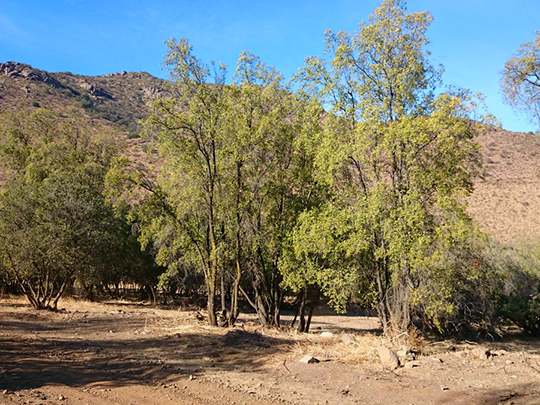Quillaja – A big tree with a big impact (part 3)
What is the last step to become a Quillaja expert? Understanding various modes of action. Take the chance to explore the beneficial effects on the immune system as well as ammonia production and become phytogenius.
The implications of feeding saponins include effects on cholesterol metabolism, cell membrane integrity, immune system, viricidal activity and effects on protozoa. Although traditionally considered as anti-nutritive components in food and feed, we have shown that the combination of saponins with other phytogenic ingredients such as essential oils stimulate intestinal transporters for glucose and amino acids resulting in improved digestibility.
At Delacon, we are using a unique, well-blended core composition of essential oils and Quillaja saponins. This patented application enhances the nutritional value of animal diets. However, a correctly applied dosing of saponins is of major importance, as the difference between beneficial and detrimental is narrow.
Good to know
- First line of defense against common pathogens is given by macrophages and neutrophils of the innate immune system. This system is able to respond very fast and unspecific to a wide range of pathogens. The drawback is however a high cost to the host.
- A more specific answer to pathogen defense is provided by lymphocytes of the adaptive immune system, giving additional protection against subsequent reinfection with the same antigen. It offers cheap and specific defense, but a response is delayed by 4 to 7 days upon facing a new pathogen.
- The innate immune response is essential to keep infections in control during the time required for the adaptive immune system to adapt to the antigen.
Effects on the immune system

In general, Quillaja saponins are better known for their beneficial effects on animal and human health by their anti-inflammatory and immunomodulatory actions. They can prevent many non-specific immune reactions such as inflammation and monocyte proliferation. Pro-inflammatory mediators are down-regulated by natural triterpenoids and are thereby very effective in reducing inflammation. Quillaja saponins increase immune-cell proliferation and boost antibody production.
The effects on immune system and inflammation are not yet fully understood but are most likely mediated by a Quillaja saponins induced production of cytokines such as interleukins and interferons. These small proteins play a crucial role in cell signaling, especially in host responses to infections, immune responses, inflammation, trauma, sepsis, cancer and reproduction.
Effects on ammonia production

Ammonia is a toxic compound that mainly originates from protein metabolism. It is rapidly removed from the circulation by the liver converting ammonia into urea in mammals (uric acid in poultry). Urea and uric acid are then excreted with urine by the kidneys. Micro-organisms can generate ammonia by enzymatic breakdown of urea and uric acid or protein fermentation. Several modes of action have been suggested in the literature on the saponin-induced ammonia reduction in livestock production:
- Inhibition of the enzymes involved in uric acid and urea degradation, especially urease
- Direct binding of ammonia
- Anti-protozoal activity reducing proteolysis of bacterial protein by protozoa, which is of importance especially in ruminants
While the effects of saponins on ammonia have been extensively studied in ruminants, research in monogastric animals on this topic is scarce. In literature, several studies demonstrate the potential of Quillaja saponins to reduce ammonia production both in vitro and in vivo in ruminant systems.
The potential of Quillaja saponins to reduce ammonia emissions is also confirmed for monogastric animals by Delacon in our Performing Nature Research Center. In vivo trials showed a consistent decrease of ammonia emissions by Quillaja saponins by 19-27 percent in pigs and 18-65 percent (32 percent on average) in poultry. Therefore, reduction of ammonia by dietary addition of Quillaja saponins may contribute to the animals’ health and lowers the metabolic stress and energy expenditure for detoxification processes of ammonia in the liver. In addition, lower aerial ammonia concentrations, reduce odor emission and irritation of the respiratory tract. This can be helpful especially during winter times in barns when ventilation rates are low, accumulating aerial ammonia to problematic concentrations.
The results of these studies suggest, that in ruminants especially the antiprotozoal effect might be responsible for the observed ammonia reduction, whereas in monogastrics the main effect will be via intestinal bacteria and their metabolic activity. However, only limited data is available in this regards and further studies are required to clarify and improve knowledge on the interaction of saponins with bacterial communities.
References available upon request
Do you want the entire article as PDF including all references?

You are only one click away.
Any open questions?

Tobias Aumiller
Scientific Lead and deputy Head of R&D at Delacon. In 2015, Tobias Aumiller joined the Delacon family as Research and Development Manager for Swine and Microbiology. He received his diploma in Technical Biology and completed his Ph.D. in animal nutrition at the University Hohenheim in 2015, focusing on feed-gut-microbiota interaction. In his leisure time Tobias loves playing table tennis and also participates in championships.










